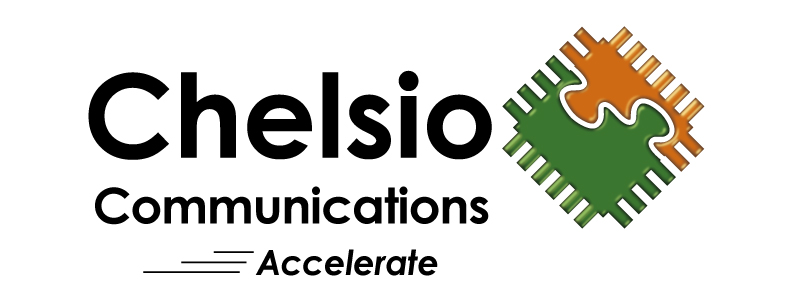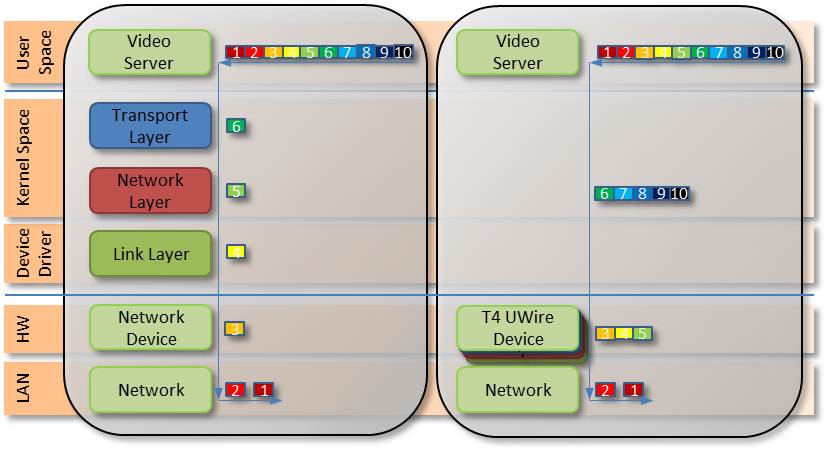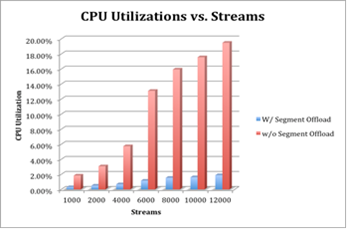| The Chelsio StreamEngine (CSE) adds video segmentation offload and per-stream rate shaping functionality to the TCP and UDP offload capabilities of Chelsio’s Terminator series (T4 and T5) adapters. This significantly reduces CPU utilization and increases video and content delivery capacity, enabling best-in-class performance for Content Delivery Networks (CDN), IPTV and Video on Demand (VOD) providers.
Video Segmentation Offload The following figure compares the traditional datapath on the left to the StreamEngine datapath on the right, showing how per-frame processing is eliminated. In this example, the video server pushes five frames at a time. In an actual implementation, a video server pushes 50 frames or more in each I/O, drastically lowering the CPU cycles required to deliver the content.
Rate Shaping StreamEngine also implements per video stream rate limiting in the adapter thereby offloading the traffic shaping that would normally be done by software running on the server. As a result, host CPU utilization and network transmission jitter are drastically reduced. The technology supports up to 16 unique shaping rates or traffic classes per channel (port), and an arbitrary number of video streams can be assigned to each class. In conjunction with VSO, the video server software can push large amounts of payload to the StreamEngine at a time, which then segments and schedules the transmission of the resulting frames onto the network as specified by the associated Traffic Class. The result is tremendous improvements in system efficiency, as show in the figure below.
Chelsio’s StreamEngine technology, a combination of hardware, firmware and software components, offloads the CPU intensive tasks from the server to the Chelsio Unified Wire Adapter, freeing up CPU cycles, and allowing the server to be equipped with less expensive, lower power CPUs, and significantly increases the capacity of the content delivery server.. |
Terminator Features |


